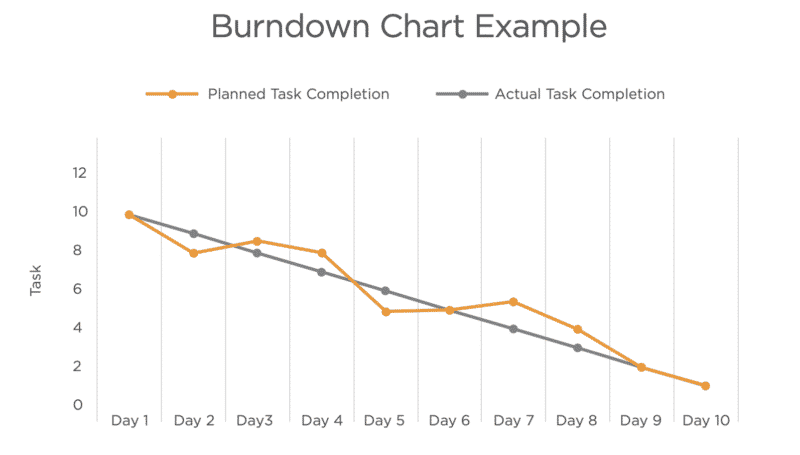Agile marketing requires a culture change, and that starts at the top, as this chapter of ‘MarTech’s Agile marketing for teams’ shows.
The following is a selection from the e-book “MarTech’s agile marketing for teams.” Please click the button below to download the full e-book.
A command and control culture can be a quick killer for agile marketing teams. Learn how you can talk to leaders in your organization about the culture change required to succeed with agile marketing.
Getting your managers to stop assigning work
This is the one that gets new teams every time — you’ve agreed to work in agile marketing, which means that the team works from a prioritized backlog and no longer takes work requests from their boss. Ouch, this one can make your manager feel really displaced and unsure of what to do.
As an agile team member, it’s important to help your boss understand the impact of you taking on her ‘really quick task’ to the team. Explain to her that your team commits to a certain number of stories in a sprint and even though it feels like a quick thing, if every team member took on one quick thing, the stakeholders would not get the work that they were expecting.
A manager’s role in agile is not to assign work, but to support the craft and the people. Explain how her role is really valuable in this way and see if she’s willing to brainstorm ways that she can help her staff.
It may also help to show how teams that aren’t interrupted can focus on doing the most important work and that they earn greater stakeholder trust by becoming more predictable and delivering a set amount of work each sprint.
You may also want to discuss what type of work warrants interrupting the team. This may need to be done as a group meeting with the team’s direct manager. When you can come to this working agreement ahead of time, it will avoid a lot of future conflicts.
For example, the managers and the team may agree that something that has caused a legal or public relations crisis would be cause for interrupting a team mid-sprint. I worked for a cereal company once that had a crisis when their cereal was tainted. They were running an ad on their website, and it had to be pulled down for legal reasons. That would be work that requires all hands on deck, doing whatever it takes to fix the problem.
However, in most cases managers are just used to getting what they want when they want it, and don’t want to wait. If trying the steps above still doesn’t work, try the data-driven approach.

The burndown chart, which was shared earlier in this book, can bring some visibility to the impact managers have to the team when they add work. When the orange line goes up, it’s because work was added. Track all of the time work was added and discuss how it impacts completion negatively. If stakeholders that are waiting for this work are getting let down, most likely your boss will not want that to continue happening.
Also, if your boss is someone who puts work on the backlog for the team, try to set reasonable expectations ahead of time about turnaround times and how the prioritization process works.
Giving the team ownership
When we move from a demand and delivery way of doing marketing to one where we are allowing the team to take on more ownership of work, it also means being accountable. This shift in power takes a high level of trust from managers to team members, which isn’t always easy.
Let’s take the example of creating a marketing email. In your old way of working, your boss may have given you explicit instructions on what to write, when to send the email, which audience, which graphics, etc. In the new way of working, we’re allowing the team to own a lot of the “how” the email will get done by giving the context of a desired outcome. In this case, it’s important for everyone on the team to have a shared understanding of what the team needs to think about for an email.
Perhaps every email needs to have a click to a landing page, a logo, etc. Does the team need to think about lead generation and what happens next, or is just sending the email enough?
I just had a conversation with a CMO of a large marketing organization on this very topic. She was used to stepping in and saving the day and didn’t trust the team to be accountable for its work. However, instead of talking to the team about her expectations, she would swoop in and fix the problem herself.
One example was when all leads from a tradeshow were expected to be entered into Salesforce — but the team didn’t do that last time because someone told them not to and they didn’t question the decision. When there isn’t clarity around who’s doing what, trust can easily be broken.
A way to start to build trust is to have a working session with leaders and get agreement on what exactly the team will own, quality standards that are expected and how the team will learn from mistakes. The team also needs to be prepared to be honest with management and own up to any shortcomings rather than place blame elsewhere.
It may take time to change culture (in some companies, a long time), but as a team member it’s important that you help educate leaders in this new way to work. And remember, agile is all about small wins. So while you may not be able to change everything at once, a few steps in the right direction can go a long way.
The post How leaders should act on an agile marketing team appeared first on MarTech.
(9)









